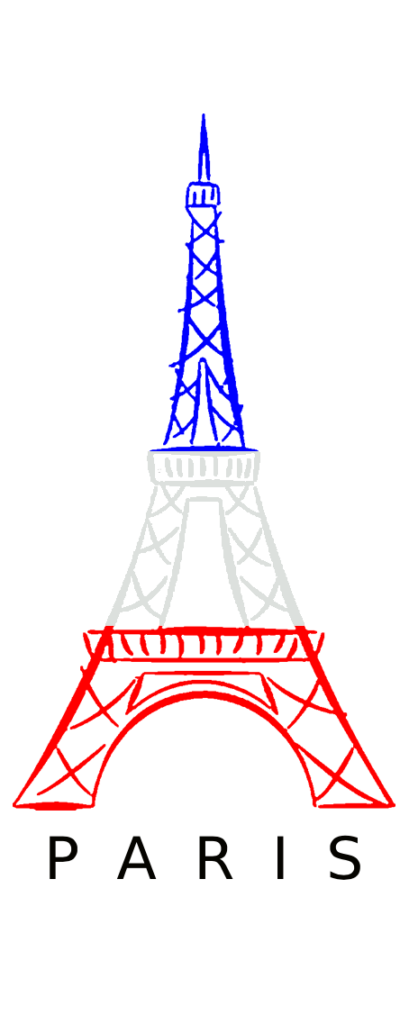Paris · Brincadeira D’Angola 2025
Brincadeira D’Angola 2025, organized by CEDANZE AJPP-CECA – Mestre Faísca, is an international meeting that will take place from June 13 to 15 in the city of Paris, with the aim of bringing together in France: mestres, teachers, trenéos, students, different peoples and cultures, carrying out: Capoeira Angola / Samba experiences and debates on the benefits generated by the practice of this sport, respect for the rules, rhythms and values of traditional Capoeira Angola.
At the event, we will present the skills of the French students to the invited masters and teachers, and we will end with a traditional Capoeira Angola Vadiação and Samba de Roda open to the public.
The event, Paris – Brincadeira D’Angola 2025, is a generational, social and cultural exchange, giving all participants and spectators access to the secrets of the civilizing values of Afro-Brazilian culture contained in Capoeira Angola, such as: Ancestry, orality, musicality, collectivity, body expression, and others that generate vital energy, the axé.
The event will be broadcast online, and will contribute to the qualified dissemination of traditional Capoeira Angola, which is little known internationally!
Events of this nature strengthen education and contribute to the country’s economy. As part of the event program, on the last day we will take a tour of the city of Paris, with a beautiful walk along the River Seine. Our guests from Latin America and Europe will discover the main sites and monuments of Paris!
We are counting on your presence at Paris – Brincadeira D’Angola 2025, where everyone is welcome.
Cordially, Mestre Faísca
<< PROGRAM >>
Photos exhibition – online event – video – socializing – awarding medals – tourism

13/06 Friday Archipelia Center / Parc Belleville – 20e
18h – 21h Video projection and traditional Capoeira Angola dance at the opening of Paris – Brincadeira D’Angola 2025.
14/06 Sunday Gymnase Hervé Rozental – 20e.
09h – 12hExperience: Capoeira Angola, Samba de Roda and Percussion. Debate on the benefits generated by practicing the sport, and respect for the rules, rhythms and values of traditional Capoeira Angola.
13h – 16h Experience the knowledge of traditional Capoeira Angola with Mestre Faisca in the technique of Mestre João Pequeno de Pastinha. Body dialog in the roda, singing, rhythm, movement and respect for the rules.
Free to the public Archipelia Center – 20e
17h Vadiação of traditional Capoeira Angola
18h45 Children aged 3 to 8 on stage
20h Samba de Roda do recôncavo baiano
15/06 Sunday · Tourism
11h – 20h Walk along the River Seine and visit the iconic sites of Paris with our guests from Latin America and Europe, and dinner in a restaurant (to be decided)
Archipelia Social and Cultural Center
17, rue des Envierges · 20e
74, rue des couronnes
N.B.: Register for the event, and join us!

VIDEO OF PARIS “THE CITY OF LIGHT”
HISTORY OF THE CITY OF PARIS
The history of Paris begins with its creation by the Celtic tribe of Parisii. The city’s history has been a series of revolts and revolutions.
FIRST STEPS
The history of Paris dates back to 259 BC, when the small tribe of the Parisii founded the city on the right bank of the River Seine. This first fishing village fell into the hands of the Romans who founded the city of Lutèce in 52 BC.
The city only took the name Paris in the 4th century. During this time, legend has it that the city resisted Attila’s invasion thanks to the intervention of Saint Genevieve (the city’s patron saint).
Clovis, king of the Franks, decided to make Paris the capital of the country in the year 508. And it was in 987 that the Capetian dynasty was installed until 1328.
Paris gained importance during the 11th century thanks to the silver trade and its geographical location, which crossed the route of many pilgrims and merchants.
REVOLTS AND REBELLIONS
At the beginning of the 12th century, students and teachers confronted episcopal authority and formed the “universitas” corporation. Louis IX granted Robert de Sorbon the foundation of the “Sorbonne”. Since then, Paris has become a university city.
Paris experienced three revolts during the 14th century: the Merchants’ Rebellion of 1358 (led by Etienne Marcel), the Maillotins’ Revolt of 1382 (a citizens’ revolt against fiscal oppression) and the Cabochiens’ Revolt of 1413 (also led by merchants). This series of revolts is listed in the Hundred Years’ War.
In addition to the conflicts that caused thousands of deaths, in 1328 the French capital was the most populous city in Europe, until its population was decimated by the Black Death. Following the Hundred Years’ War, Paris was devastated and Joan of Arc was unable to liberate the city from the English and their allies (the Burgundians).
Despite the presence of the Court in the Loire Valley, the city continued to expand in a disjointed way. It wasn’t until 1528, when King Francis I established his official residence in Paris, that the city became the largest in the West.
August 24, 1572 was the date of a tragic event, better known as the Massacre of Saint Bartholomew – the mass slaughter of Protestants (Huguenots) organized by the kings of France. This tragic episode continued for several months in other cities.
That same year, Margaret of Valois, sister of the King of France, married Henry of Navarre (head of the Huguenot dynasty), which allowed the conflicts to subside. However, in 1588, the French Catholics clashed with King Henry III, a day that was named “Day of the Barricades”. The king was assassinated and Henry of Navarre took the throne.
In 1648, the general impoverishment of the population led the people to rise up against the king – this was the second “Day of the Barricades”. This event marked the beginning of the “Fronde”, a series of civil wars that took place in the country between 1648 and 1662. Fifteen years later, King Louis XVI decided to move the court to Versailles.
THE DECLINE OF THE MONARCHY
After the “Fronde” period, poverty spread throughout the city. At the same time, the current of thought at the time corresponded to that of the Enlightenment, whose fundamental principles were based on reason, equality and freedom.
Poverty combined with the new ideas conveyed by the current of the Enlightenment – whose movement was initiated by philosophers and literary scholars such as Voltaire, Rousseau, Diderot and Montesquieu – greatly favored the desire to promote socio-economic equality. These circumstances led the French people to make the Revolution and brought about the decline of the monarchy of divine right.
On July 14, 1789, Parisians attacked the Bastille, the symbol of monarchical absolutism, and it was on September 3, 1791 that the first Constitution in French history was promulgated. It no longer gave the king executive power and the right to veto laws passed by the Legislative Assembly.
On August 10, 1792, after several assaults, the people seized the Tuileries Palace and the Legislative Assembly suspended the king’s constitutional functions. The new parliament abolished the monarchy and proclaimed the Republic. On August 17, 1795, a new constitution was promulgated which gave executive power to the Directory.
NAPOLEON’S PARIS
The new constitution was strongly opposed by monarchist and Jacobin groups. Several revolts broke out in Paris, all suppressed by the army.
However, on November 9, 1799, the army failed to suppress the rebellion of General Napoleon Bonaparte, who overthrew the Directory to establish a consulate.
In the 15 years of the Napoleonic Empire, Paris experienced a period of great expansion: the Place du Carrousel was enlarged, two triumphal arches were erected, as well as a column, the stock exchange and other markets and slaughterhouses.
The Napoleonic Wars, which took Napoleon’s Empire with them, ended on November 20, 1815, after the final defeat at the Battle of Waterloo and the Second Treaty of Paris in 1815.
NAPOLEON’S PARIS
After Napoleon’s defeat, France went through a difficult period that resulted in strong political instability, until the coup of 1851 that propelled Napoleon III to power. During his 17 years in office, the President strongly promoted urban development.
With the arrival of Napoleon III and the election of Baron Haussmann as mayor of the city, Paris underwent major changes in terms of architectural style and urban structure: the center was rebuilt and its walls were destroyed to make way for a larger urban territory.
On January 28, 1871, Prussian troops surrounded Paris and, a few years later, the Third Republic was proclaimed. With the new government in power, Paris experienced a phase of economic development which led to the construction of the Eiffel Tower in 1889, the emblem of the city known throughout the world.
THE CONTEMPORARY ERA
From the 20th century onwards, many changes took place in the capital with the reconstruction of different districts of the city destroyed by the two world wars.
During the First World War, the city withstood numerous bombings. In 1940, Nazi-occupied Paris suffered a great deal of damage. However, on August 25, 1944, Parisians managed to liberate the capital.
During the Algerian War, Paris once again experienced a lot of unrest with violent anti-war demonstrations and numerous attacks by the OAS (Organization of the Secret Army).
Paris was also the scene of what was called “May 68”, the series of strikes and demonstrations that took place during the months of May and June 1968. It was the biggest student revolt in the history of France, and certainly in Western Europe.
One of the last notable events in the capital was the uprising in March 2006, when students took to the streets to protest against the labor reform.
In November 2015, Paris was the victim of a tragic event: the terrorist attacks in and around the capital, Saint-Denis, in which 137 people lost their lives and 415 were injured.





